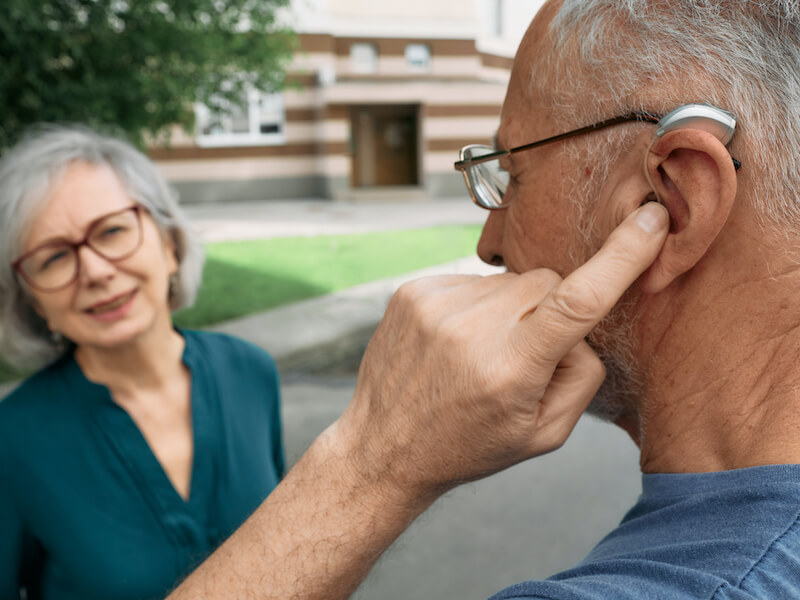
Have you ever had your internet cut just as you’re almost to the best part of your favorite Netflix movie? Instead of discovering who won the baking show, you have to watch a never-ending spinning circle. And so you just wait. Is it your internet provider, modem, router, or perhaps it will just come back on its own? It kind of stinks.
Technology can be enormously frustrating when it doesn’t work properly. Your hearing aids definitely fall into this category. When they’re functioning correctly, hearing aids can help you remain connected with the ones you love and better hear co-workers when they speak to you.
But your symptoms of hearing loss can suddenly become very frustrating when your hearing aids stop working. You’ve been let down by the technology you depend on. Why would your hearing aids just quit functioning? So what should you do? Here are the three common ways your hearing aids can fail and how to troubleshoot and identify them.
Three common issues with hearing aids (and some possible solutions)
Even though hearing aids are complex technology, people may encounter three common problems with them. Let’s have a look at possible causes of these issues and potential fixes.
Whistling and feedback
So, perhaps you’re attempting to have a chat with your family or watch your favorite show and you start to notice a horrific whistling noise. Or perhaps you detect a bit of feedback. You begin to think, “this is weird, what’s up with this whistling”?
Whistling and feedback can be caused by these possible issues:
- Earwax accumulation in your ear canal can compromise the way your hearing aid functions. You’ll notice this comes up pretty often. Whistling and feedback are often one outcome of this sort of earwax accumulation. If possible, you can attempt to clean some earwax out of your ear or consult with us about the best way to do that (do not use a cotton swab).
- The tubing that connects the hearing aid with the earmold, on behind-the-ear models, can occasionally become compromised. Try to examine this tubing as well as you can and make sure nothing is loose and the tube does not appear damaged.
- Your hearing aids might not be seated in your ears correctly. Try removing them and putting them back in. You can also try turning the volume down (if this works, you might find some short-term relief, but it also likely means that the fit isn’t quite right and you should talk to us about it).
If these issues aren’t easily resolved, it’s worth consulting with us about adjusting the fit or sending your device in for maintenance (depending on what we think the underlying cause of that whistling or feedback may be).
Hearing aids not generating sound
Your hearing aids are supposed to make, well, sound. That’s what they’re made to do! So if you find yourself thinking, “I don’t hear any sound coming from my hearing aid,” well, then something is certainly not right. So what could cause hearing aids to drop all sound? Well, there are a couple of things:
- Batteries: If you have rechargeable batteries, make certain that they’re completely charged. And whether your batteries are rechargeable or not, it may be worth swapping them out for fresh ones.
- Earwax buildup: Here we go again with the earwax! Take a close look to see if you come across any earwax on the microphone or speakers. Keep your device really clean.
- Power: Look, we’ve all disregarded turning on the hearing aid before. Make certain that’s not the problem. This possible problem can then be eliminated..
- Your settings: If you have them, cycle through your personalized settings. It’s feasible your hearing devices are not on the right custom setting (so perhaps your hearing aids think you’re in a gymnasium instead of around the kitchen table). This incorrect setting could throw off the sound you’re hearing.
We’re here for you if these measures don’t clear up your issues. Whether repair, maintenance, or replacement is your next step, we will be able to help you figure that out.
Painful ears while you’re wearing your hearing aids
What if your hearing aids work perfectly, but whenever you put them in your ears, your ears begin hurting? And you’re likely wondering why your hearing aids would make your ears hurt. You’re not as likely to use your hearing aids on a daily basis if they hurt your ears. So, why do they hurt?
- Time: Usually, it just takes a little while to get used to your hearing aids. Each person will have a different adjustment period. It’s worth talking about when you purchase your hearing aids so you have a realistic concept of how long it might take you to become comfortable with your devices. If uncomfortable ears remain, talk to us about that as well!
- Fit: The fit of the device is the most obvious problem. Naturally, when the fit is nice and tight, your hearing aids will work best. Which means that there can sometimes be pain involved in a poor fit. Many hearing aids can be personalized to your particular ears. The better the fit, the fewer issues you’ll have with discomfort over the long run. We will be able to help you get the best possible fit from your devices.
Avoid problems with a little test drive
One of the best ways to prevent possible issues with hearing aids is to take them for a bit of a test drive before you commit. In most cases we’ll let you test out a set of devices before you decide that’s the set for you.
Selecting the right hearing aids, adjusting them to fit your needs, and helping with any ongoing problems you might have, are all things we will help with. In other words, when your devices quit working, you’ll have a resource that can help!
And that’s a lot more than you will get with an over-the-counter hearing aid!
